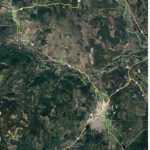Home »

Elk River watershed monitoring program initiated
The Elk River Watershed Alliance (ERA) is developing the Elk River Watershed Collaborative Monitoring Program. A program to bring together a group of partners from across the watershed to pool and gather data, identify data gaps, better monitor water quality, fish habitat and fish populations, and publicly share the results.
 “A unified, independent body is needed to manage, coordinate and assess environmental monitoring on the Elk River and its tributaries,” said ERA Chair George Greene.
“A unified, independent body is needed to manage, coordinate and assess environmental monitoring on the Elk River and its tributaries,” said ERA Chair George Greene.
A not-for-profit in southeastern British Columbia, the ERA works to sustain the Elk River’s quality, beauty and recreational experiences alongside a strong industrial and tourism economy in the Elk Valley.
“While natural resource development including coal mining and forestry, and river-based tourism supports local communities and provides many Elk Valley residents with valuable economic opportunities, it is essential to maintain aquatic health and environmental values more broadly across the watershed,” said Greene.
Today, the Elk River and its tributaries are under increasing pressure from the cumulative effects of human activity, including privately managed forest logging, metallurgical coal mining, urban expansion, invasive species, recreational fishing, linear developments such as rail and roads, and the looming and evolving threat of climate change. ERA believes a comprehensive environmental monitoring system to track changes in the watershed from these stressors is required to effectively manage and adapt to potential impacts, Greene said.
While there continues to be considerable government-regulated compliance monitoring underway, the ERA sees significant gaps in monitoring data to assess water quality, fish habitat, and populations status.
“There is a critical need to understand the current and future effects of cumulative stressors on these ecosystems and fish populations,” said Chad Hughes, ERA Executive Director. “Currently, environmental monitoring in the Elk Valley is conducted by various entities, including mining companies, government departments, not-for-profits and environmental consultancies. Unfortunately, these monitoring activities are largely uncoordinated, resulting in redundancies, overlap and data gaps. Furthermore, much of this data is retained in the silos of individual databases and consequently not integrated to greatest effect.”
ERA consultation has shown widespread agreement for an independent body to undertake watershed monitoring based on scientific, Indigenous, and local knowledge to build a complete understanding of the health of the Elk River watershed.
“Data and information must be fully available and accessible to land managers, resource companies, researchers, and the broader community and used to inform decision making,” said Stella Swanson, aquatic ecologist and Chair of ERA’s Program and Technical Working Group Director.
ERA will function as the hub for the collaborative and is actively seeking partner organizations and individuals from across the Elk Valley to represent the diverse range of interests in the continued health of Elk River ecosystems. Indigenous communities, governments, industry, river tourism and recreation, along with individual experts are invited to join the collaborative.
“Effective management of cumulative effects on the health of the Elk River ecosystem depends upon meaningful, reliable, and accessible monitoring information which is trusted by and available to everyone,” said Swanson, PhD, P. Biol, Chair of ERA’s Program and Technical Working Group.
For more information, see the ERA website or contact the Elk River Watershed Alliance at [email protected].
Lead image from ERA’s Elk River Watershed Collaborative Monitoring Program report.
e-KNOW







